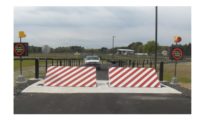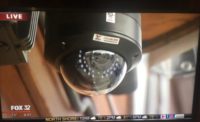Rather than wiring the entire subdivision for video, Internet protocol (IP) cameras are wired into the broadband connections of the homes to which they are closest. Then the output is viewed on a Web site accessible only to members of the subdivision’s Neighborhood Watch group.
No central station is used. An all-volunteer team of subdivision residents trained by the Dallas police watches the video, asserted Dick Becker, president of the Richland Park Estates Homeowners Association. If they see suspicious activity, they call 911, Becker explained. “Any movement on any camera is recorded,†he noted.
A higher crime rate in the subdivision than in other areas of Dallas motivated residents to seek increased security, Becker noted. He estimated that during a 15-week period, his subdivision had the highest crime rate as a percentage in Dallas for approximately seven weeks.
Most were petty crimes, such as theft of computers, consumer electronics, jewelry and anything else that can be sold quickly for cash. The neighborhood’s size is only six blocks by three blocks, Becker calculated.
Before installation of the video system, the subdivision already had its own Neighborhood Watch group. “We have a fantastic crime watch group that does their job, but they can only do so much -- they can’t be out there 24 hours a day, seven days a week,†Becker declared.
An unguarded fence surrounds the community and security lights were installed around the perimeter, but residents felt more was needed when the crime figures were released, Becker related.
Proposals from armed security guards were received. “The problem was that their prices were anywhere from $700 a month to $1,500 a month for two quick passes through the neighborhood each night -- that doesn’t cover too much,†he said.
Becker does not remember who suggested video cameras, but several companies bid, and the second proposal from Omni-Watch Systems, Garland, Texas, was selected almost unanimously by the 55 people at the meeting.
“We have 141 houses, so I’d say one-third of the houses were represented,†Becker estimated. “That’s the most turnout we’ve ever had for a meeting.â€
Only one person did not vote for the cameras, Becker said. The system will cost each homeowner a one-time $50 fee plus the monthly Internet access fee. The entire eight-camera system cost nearly $9,000.
“We’re using a combination of IP cameras and Web transmitters,†explained Butch Davis, president of Omni-Watch and Rapid Response Systems also of Garland, Texas, which is the installing dealer for this job. “We have a custom-designed user interface that ties all the cameras together into a package.â€
Access to the interface is tightly controlled through user names and passwords that are given only to crime watch participants. The system uses 500 gigabytes of storage for two to three weeks of video, Davis estimated.
“Our normal system would store the data at our data center, but they also wanted an active copy if they needed to pass it on to the police,†Davis said of the homeowners association. “So we built a receiving terminal at one of the director’s homes and mirror it through our security data center so there’s images stored at two points.â€
In response to concerns about invasion of privacy, Davis responded, “We’ve been very careful to place all the cameras in areas that are publicly viewable. The homeowners’ group is keeping the recorded data confined -- it’s not publicly available.â€
In an online poll that accompanied an article in the Dallas Morning News about the subdivision’s use of cameras, those responding online voted 89 percent in favor of the cameras, Davis reported.




